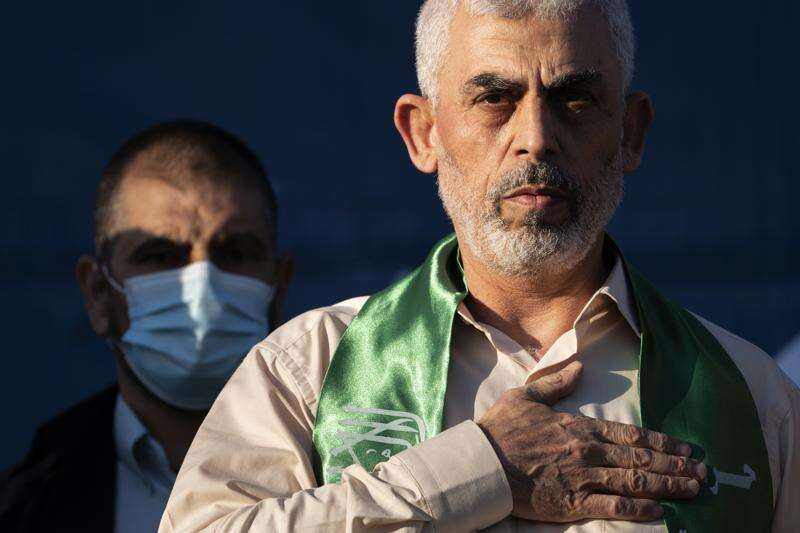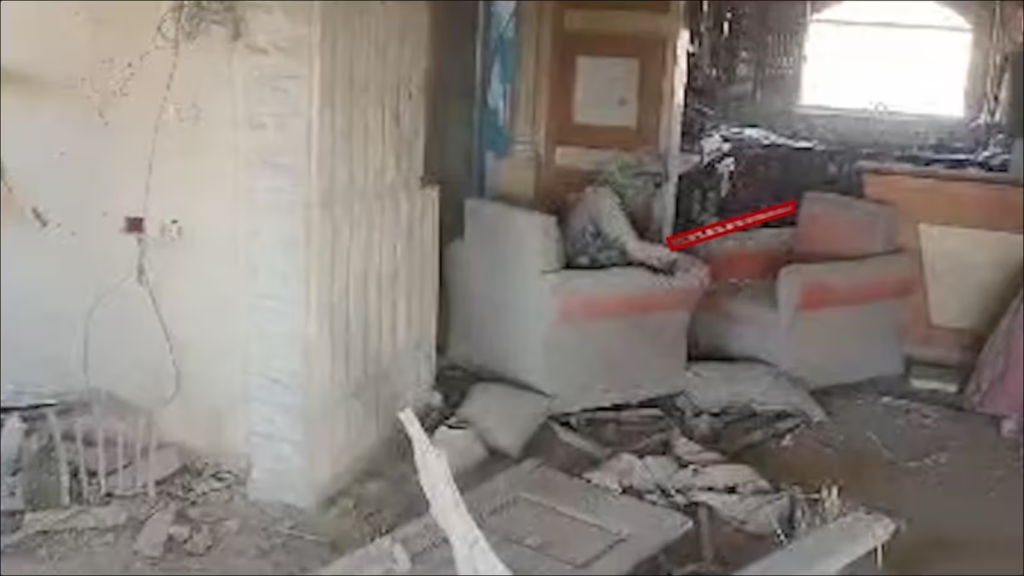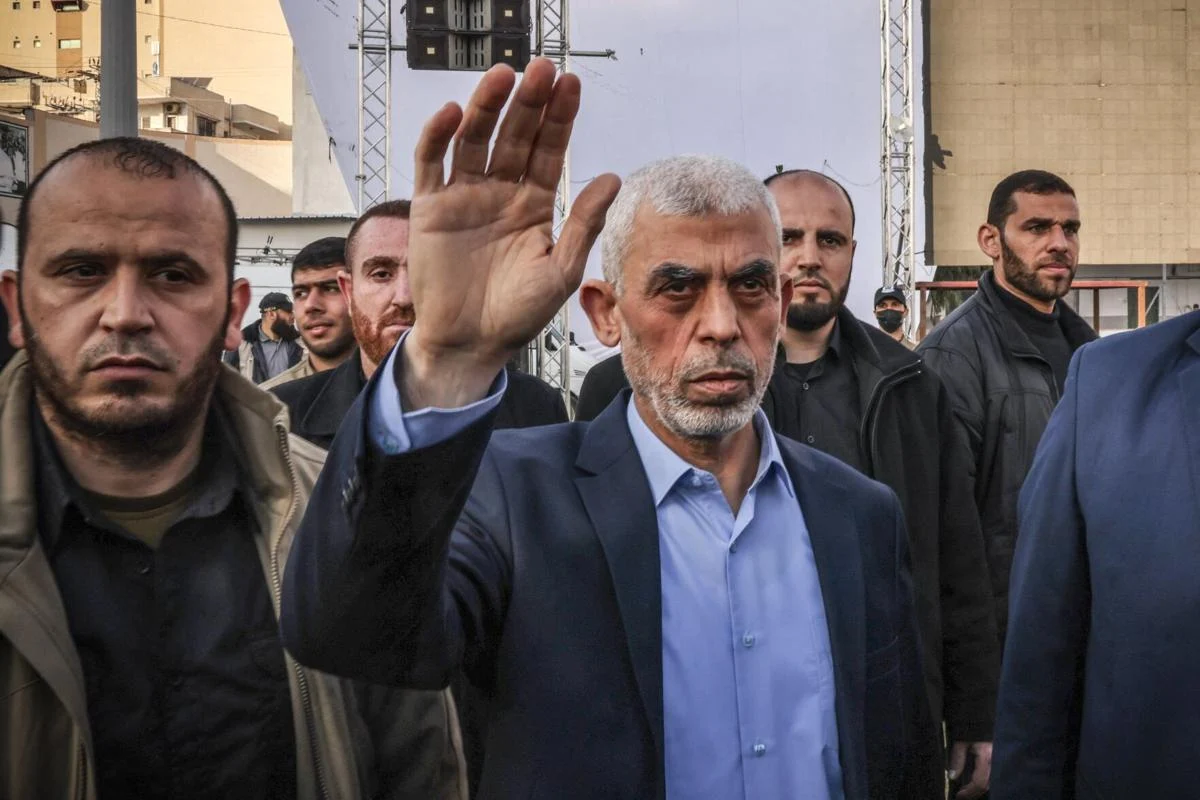On October 16, 2023, Israeli forces encountered Hamas leader Yahya Sinwar in a deadly confrontation in southern Gaza. Sinwar, a key architect behind the October 7 attack, was identified using a combination of medical records stemming from his past brain cancer treatment and subsequent forensic tests.
Yahya Sinwar played a crucial role in orchestrating the October 7, 2023, attack, which resulted in the deaths of over 1,200 people and the taking of 251 hostages. The attack, considered Israel’s deadliest terror strike, spurred an intense manhunt for Sinwar, a figure long known for his leadership within Hamas.
Sinwar, 61, rose through the ranks within Hamas due to his reputation as a ruthless and tactical leader. Having spent years in Israeli prisons and masterminding various operations against Israel, he was viewed as a key figure responsible for driving conflict and violence in the region.
After the October attack, Israeli forces were particularly keen on tracking him down, as he represented a significant threat to Israeli security.
For over a year following the attack, Israeli troops scoured Gaza for Sinwar, often combing through the complex network of tunnels and urban hideouts used by Hamas militants. Despite extensive efforts, Yahya Sinwar remained elusive until a chance encounter in mid-October.
The Deadly Confrontation in Southern Gaza
On October 16, Israeli infantry soldiers from the Bislach Brigade were conducting operations in the Tal El Sultan area of southern Gaza, specifically searching for high-ranking Hamas operatives. As they moved through the rubble and destroyed buildings, the troops noticed three suspected militants moving between the structures.

In the chaos of the battlefield, Israeli troops opened fire, leading to a gunfight. Amid the exchange, one of the suspected militants, later confirmed to be Yahya Sinwar, took refuge in a ruined building. Tanks fired shells at the building, and a missile was launched, further damaging the structure.
Read : Drone Footage Shows Hamas Chief Yahya Sinwar Just Before He Was Killed: Watch
Drone footage captured by the Israel Defense Forces (IDF) shows a man, injured and covered in dust, slumped in a chair inside the ruined building. The footage, shared by the IDF, depicted the man weakly throwing a stick at the hovering drone.
At that moment, Israeli forces had no reason to believe they had cornered Yahya Sinwar. The man was labeled a fighter by IDF spokesperson Rear Admiral Daniel Hagari, who stated that after attempting to escape, the man was “eliminated.”
The soldiers on the ground did not immediately recognize that the man they had killed was Yahya Sinwar, the individual they had been pursuing for over a year. It wasn’t until they returned the next day that they realized one of the bodies in the building bore a striking resemblance to Sinwar.
The Role of Medical Records in Identifying Sinwar
After the initial encounter, Israeli troops refrained from moving the body out of caution, fearing potential booby traps set by Hamas militants. Instead, they removed a portion of a finger from the body and sent it back to Israel for testing. While awaiting results, the troops worked with experts to compare the body to known images of Sinwar.
Yahya Sinwar’s past medical history became a critical factor in confirming his identity. In 2008, while imprisoned in Israel, Sinwar was diagnosed with a brain tumor. He had been incarcerated since the late 1980s for his involvement with Hamas, but during his time in Eshel Prison, his health took a drastic turn, leading to the discovery of a brain tumor. Remarkably, an Israeli surgeon successfully operated on Sinwar’s brain, saving his life.
Sinwar’s extended stay in prison and his treatment for brain cancer left Israeli authorities with a detailed medical record of his condition, including dental imprints, DNA, and other personal health data. These records, combined with the forensic evidence collected from the scene, became instrumental in identifying his body after his death.
The Forensic Process and Confirmation
Once the Israeli authorities retrieved the part of the finger, they began the process of forensic identification. The first step involved comparing the man’s dental structure to the records on file. Sinwar’s medical records from his time in prison, including dental imprints and detailed notes on his jaw structure, were crucial in this analysis.
This is how Yahya Sinwar, the Hamxs chief who orchestrated the October 7th attack, looked after he was ended by the IDF.
— Open Source Intel (@Osint613) October 17, 2024
Justice served. pic.twitter.com/6XHdOIMSl6
The IDF worked with dental and orthodontic specialists to compare the physical characteristics of the body to the records they had on Sinwar.
In addition to dental records, Israeli authorities used DNA testing to confirm the identity of the body. These forensic tests provided definitive proof that the man killed in the confrontation was indeed Yahya Sinwar, the leader of Hamas.
On October 17, 2023, after completing the identification process, Israel officially announced Sinwar’s death. His elimination marked a significant victory for Israel, as Yahya Sinwar had been a top target due to his role in the 2023 attack and his leadership within Hamas.
The Aftermath and Implications for Hamas
The death of Yahya Sinwar sent shockwaves through Hamas, which had relied heavily on his leadership and strategic planning. As one of the founding members of Hamas’ military wing and a central figure in Gaza’s politics, Sinwar’s death left a leadership vacuum in the organization.
His loss also represented a symbolic and operational blow to Hamas, as Yahya Sinwar had been one of the most experienced and battle-hardened leaders in the group.
For Israel, the elimination of Sinwar was a crucial moment in its broader campaign to dismantle Hamas’ leadership and infrastructure. The fact that his death was confirmed using medical records from his brain cancer treatment highlighted the long and complicated history between Israel and Sinwar. Despite having once saved his life, Israeli forces ultimately brought an end to Sinwar’s reign of terror.

The use of advanced forensics, medical records, and drone technology underscored the sophistication of Israel’s intelligence and military operations. By combining these methods, Israel was able to successfully identify and confirm the death of one of its most wanted enemies, further weakening Hamas’ leadership structure.
In the days following Sinwar’s death, tensions in Gaza remained high, with ongoing clashes between Israeli forces and Hamas militants. The death of Sinwar did not mark the end of the conflict, but it served as a reminder of Israel’s determination to neutralize key figures within Hamas.
Yahya Sinwar’s journey from a brain cancer patient saved by Israeli surgeons to a Hamas leader killed by Israeli troops is a testament to the complex and often tragic nature of the Israeli-Palestinian conflict. His death, confirmed through the very medical records created during his treatment, symbolizes both the human and political dimensions of this ongoing struggle.
let’s enjoy few years on earth with peace and happiness….✍🏼🙏

